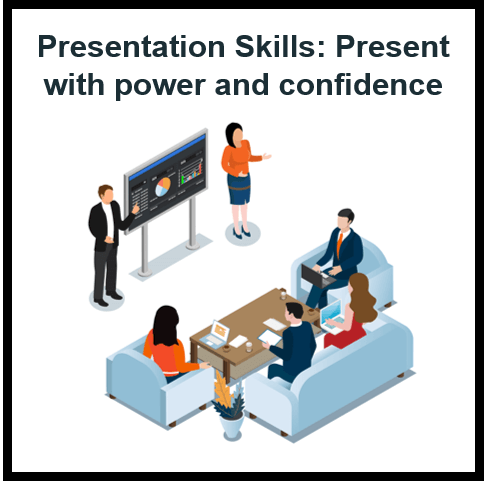The art of speaking is a skill that takes practice, commitment and a lot of time. It’s about being able to deliver your message with confidence and power. However, it doesn’t have to be hard or time-consuming, especially if you have these presentation skills.
This article will teach you how to present more power and confidence on every client interaction and make your presentation flow seamlessly.
There are many ways to communicate effectively in business without making use of the spoken word.
Advertising and public relations departments often put a lot of time and money into visual communications, including advertisements, press releases, presentations, photo shoots and videos.
Speak slowly with confidence
If you’re speaking in front of a group it’s important to speak slowly. It’s human nature to speed up when we are nervous and this can cause the message to be garbled. You want your audience to hear everything you have to say without any distractions. This is difficult for most people, even in familiar surroundings, so practice slowing down.
Project with conviction
The art of speaking is the ability to communicate powerful messages. In order to be a great speaker, you have to project with conviction and power. One way to project your voice is by speaking loudly when needed. The key here is not being too forceful in your volume, but rather speaking in a manner that would be appropriate for a situation where you need to gain attention. Another way to project your voice is through good posture. This will help make you seem more confident and powerful.
You need to project with conviction while talking; otherwise it will sound as though you don’t believe what you are saying is true or worth being spoken aloud. Projecting with conviction means knowing what works for you and sticking by that message no matter what else happens during the presentation. If something does happen, keep projecting with confidence by continuing on with your presentation without letting it affect your message or tone.
Projecting with conviction means being able to say things in a convincing way so that the audience can feel how convinced you are of what you are saying. This comes from knowing the information and believing it is true.
Use clear eye contact
Eye contact is an important part of communication. When you make eye contact with your audience, it communicates to them that you are interested in what they have to say and that you care about their opinion. It also helps them feel comfortable speaking to you as well.
Eye contact is one of the most important presentation skills because it conveys that you are confident in what you’re saying. When used correctly it can make your listeners feel more engaged and committed to what you have to say. When you make eye contact, make sure that your eyes are relaxed and not darting around the room like a deer caught in headlights. Look at each individual in the room directly–don’t let anything distract you from making eye contact with your audience members.
Those who are looking for more information will be more inclined to listen and engage with you when they see that you are paying attention. Remember, it’s better to make eye contact than it is not make any at all, so try making sure that you maintain a solid gaze throughout your presentation or speech.
Use good posture
Presentation skills: master the art of delivering your message in a confident and powerful way. Posture is another key presentation skill because it subconsciously communicates confidence and power when done correctly.
One of the most important things to remember when you are speaking is to maintain good posture. Maintaining good posture means that your shoulders are back, head is up, chin is pushed forward and your neck should be relaxed.
It can sometimes be hard to find the right words when you are nervous, which can often lead to slouching or curling of your body. This kind of stance makes it easier for people to tune out what you're saying because they subconsciously think that you don't care about what you're saying.
To counteract this negative effect, try practicing good posture by sitting with arms at your sides or hands on knees during quiet moments in between conversations. Good posture can help project power and confidence in your message. A slumped body language suggests uncertainty or weakness which contradicts the message that you are trying to convey. On the other hand, good posture suggests strength and confidence which goes hand-in-hand with the desired message.
Stress more on selling points
The last thing you want to do during a presentation is droning on about facts and figures. The only way to keep your audience engaged is by focusing on selling points that will appeal to them the most. You don’t have to give away all of your secrets, but if you want people to care, then make sure you’re not talking too much about process.
Conclusion
Presentation skills are important in any business, particularly in sales.
But every business has a different presentation skill.
The art of speaking is a skill that takes practice, commitment and a lot of time.
There are many ways to communicate effectively in business without making use of the spoken word.
By using these pointers, you can learn how to present yourself professionally by using the below pointers and have confidence in your presentation skills.




83 thoughts on “Presentation Skills: Boost Your Power and Confidence in Every Client Interaction”
… [Trackback]
[…] Find More on to that Topic: skillfine.com/presentation-skills-client-interactions/ […]
… [Trackback]
[…] Read More here on that Topic: skillfine.com/presentation-skills-client-interactions/ […]
… [Trackback]
[…] Read More on to that Topic: skillfine.com/presentation-skills-client-interactions/ […]
… [Trackback]
[…] Read More Info here on that Topic: skillfine.com/presentation-skills-client-interactions/ […]
… [Trackback]
[…] Find More on to that Topic: skillfine.com/presentation-skills-client-interactions/ […]
… [Trackback]
[…] Info to that Topic: skillfine.com/presentation-skills-client-interactions/ […]
… [Trackback]
[…] There you will find 82128 additional Information to that Topic: skillfine.com/presentation-skills-client-interactions/ […]
… [Trackback]
[…] There you can find 18875 more Info on that Topic: skillfine.com/presentation-skills-client-interactions/ […]
… [Trackback]
[…] Information to that Topic: skillfine.com/presentation-skills-client-interactions/ […]
… [Trackback]
[…] Read More on on that Topic: skillfine.com/presentation-skills-client-interactions/ […]
… [Trackback]
[…] Information to that Topic: skillfine.com/presentation-skills-client-interactions/ […]
… [Trackback]
[…] Find More Information here to that Topic: skillfine.com/presentation-skills-client-interactions/ […]
… [Trackback]
[…] Read More here to that Topic: skillfine.com/presentation-skills-client-interactions/ […]
… [Trackback]
[…] Read More Info here to that Topic: skillfine.com/presentation-skills-client-interactions/ […]
… [Trackback]
[…] Find More here to that Topic: skillfine.com/presentation-skills-client-interactions/ […]
… [Trackback]
[…] Here you can find 97296 additional Information on that Topic: skillfine.com/presentation-skills-client-interactions/ […]
… [Trackback]
[…] Find More here on that Topic: skillfine.com/presentation-skills-client-interactions/ […]
… [Trackback]
[…] Here you can find 92376 more Information to that Topic: skillfine.com/presentation-skills-client-interactions/ […]
… [Trackback]
[…] There you will find 95037 additional Information to that Topic: skillfine.com/presentation-skills-client-interactions/ […]
… [Trackback]
[…] Find More here on that Topic: skillfine.com/presentation-skills-client-interactions/ […]
Thanks for sharing. I read many of your blog posts, cool, your blog is very good.
Thanks so much for the blog post.Thanks Again. Really Great.
Major thanks for the post.Much thanks again. Keep writing.
Very informative post.Really looking forward to read more. Cool.
I really liked your post. Much obliged.
Im obliged for the blog article.Thanks Again.
Great, thanks for sharing this article post.Much thanks again. Great.
I appreciate you sharing this article post.Much thanks again. Keep writing.
Very good article post.Really looking forward to read more. Much obliged.
Thank you for your article post.Thanks Again. Will read on…
Very good blog. Great.
wow, awesome post.Really looking forward to read more. Awesome.
Thanks-a-mundo for the post.Really thank you! Much obliged.
Looking forward to reading more. Great blog article.Really thank you! Really Cool.
Really enjoyed this article post.Really thank you! Cool.
A round of applause for your blog post.Much thanks again. Much obliged.
This is one awesome blog.Really thank you! Fantastic.
Major thanks for the blog.Really looking forward to read more. Great.
Hey, thanks for the article post.Really looking forward to read more. Really Great.
Thanks-a-mundo for the article. Keep writing.
Very neat article.Thanks Again. Great.
Thank you for your blog post. Really Cool.
Thanks so much for the blog article.Really looking forward to read more. Keep writing.
Im grateful for the article post. Want more.
Thanks for the article post.Much thanks again. Cool.
Thanks for the blog. Fantastic.
Great article post. Want more.
A big thank you for your article. Want more.
I am so grateful for your article.Really looking forward to read more. Want more.
A big thank you for your article.Much thanks again. Much obliged.
Thanks again for the post. Really Cool.
Im obliged for the article post. Awesome.
Great, thanks for sharing this blog article. Great.
I think this is a real great blog.Much thanks again. Really Cool.
Appreciate you sharing, great article.Much thanks again. Awesome.
Great blog article.Really thank you! Really Great.
I really like and appreciate your blog article.Much thanks again. Much obliged.
Really informative article.Thanks Again. Keep writing.
Muchos Gracias for your blog post.Really thank you! Really Cool.
I am so grateful for your article.Much thanks again. Cool.
Muchos Gracias for your blog. Great.
Looking forward to reading more. Great article post.Really looking forward to read more. Fantastic.
I think this is a real great blog.Thanks Again. Great.
Wow, great article post. Cool.
Really enjoyed this article post.Thanks Again. Great.
Thank you for your blog post.Really looking forward to read more. Will read on…
Major thankies for the blog. Fantastic.
I appreciate you sharing this article post.Thanks Again. Really Cool.
Im thankful for the blog.Really looking forward to read more. Want more.
Major thanks for the blog. Really Great.
I value the blog post. Much obliged.
I really like and appreciate your article post.Really thank you! Keep writing.
wow, awesome article.Much thanks again. Want more.
Thanks so much for the blog article. Want more.
Wow, great blog post.Thanks Again.
wow, awesome article post. Fantastic.
Your article helped me a lot, is there any more related content? Thanks!
Can you be more specific about the content of your article? After reading it, I still have some doubts. Hope you can help me.
Your point of view caught my eye and was very interesting. Thanks. I have a question for you.
Your point of view caught my eye and was very interesting. Thanks. I have a question for you.
Thanks for sharing. I read many of your blog posts, cool, your blog is very good.
Thank you for your sharing. I am worried that I lack creative ideas. It is your article that makes me full of hope. Thank you. But, I have a question, can you help me?
Thanks for sharing, your article helped me a lot. I hope your article can help more people, so I will reprint your article to my site, do you think it is appropriate? If you allow it.